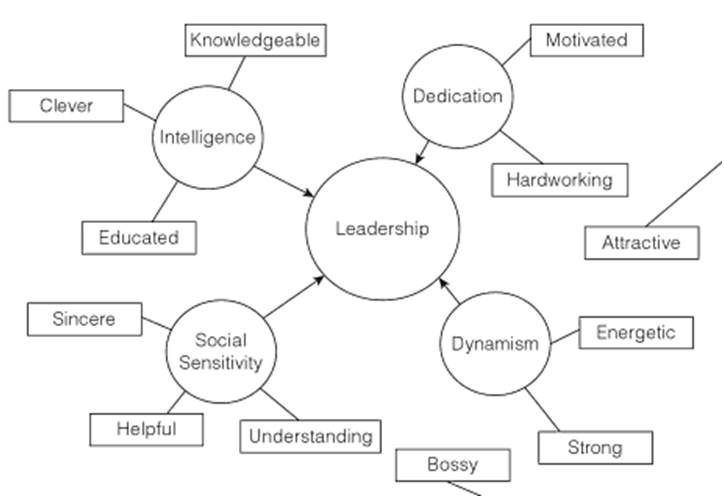Leadership

The nature of leadership in private sector organisations is directly impacted by the primary purpose of such organisations and this primary purpose is profit maximisation (DuBrin, 2012). This opinion is confirmed by Goldsmith et al. (2010), who perceive profit maximisation as the main assessment criteria for private sector organisational leaders. According to Gold et al. (2010) constant search for competitive advantage can be justly specified as one of the most fundamental characteristics of leadership in private sector organisations. According to this stance, competitive advantage can be derived from a wide range of sources and business processes, and it is the responsibility of a business leader to be able to formulate the most appropriate competitive advantage, and ensure its efficient utilisation. Stanfield (2009) explore the issues of ethics for modern business leaders and conclude that the level of ethical requirements have increased for business leaders in the last several decades contributed by increasing level of scrutiny business leaders are being subjected to. Stanfield (2009) offers justification for this claim by stating that increasing role of viral media in the society makes any evidence of unethical behaviour hard to escape from. Maintaining high level of flexibility and implementing changes in relation to various business processes in a constant manner is pointed to as a significant challenge to business leaders by Kezar et al. (2011) and Kreitner and Cassidy (2012). Moreover, Kezar et al. (2011) stress the role of assertiveness and communication skills for business leaders in order to be able to implement changes in an efficient manner. The issue of talent management by business leaders comprehensively addressed by Bertocci and Bertocci (2009) reveals another important aspect of successful leadership practice. Specifically, according to Bertocci and Bertocci (2009) human resources need to be perceived as the most valuable business asset in the 21st…
Numbers of authors have addressed different aspects of leadership in public sector organisations in their works. Generally, public sector leadership has been described as “more specific than general leadership and more expansive than political leadership” (Raffel, 2009, p.4). There have been attempts to classify the types of leaders and followers in public sector organisations within a certain framework. One of the most notable examples of such works belong to Wart (2009), how specifies the types of leaders and followers in public organisations in the following manner: Types of work Execution Policy New ideas Types of Followers Employees Managers Executives with policy responsibilities Transformational leaders Constituents Community leaders of volunteer groups Legislators and advisory board members Lobbyists and policy entrepreneurs Adherents Small group leaders Leaders of social movements Philosophical zealots and social trend setters Types of leaders and followers Source: Wart (2008) Gallos (2008) declares employee motivation to be one of the most significant challenges met by public sector organisational leaders. Bertocci and Bertocci (2009) offer more detailed explanation to this viewpoint by stating that whereas managers in private sector have greater level of freedom in terms of rewarding and motivating employees through tangible motivational tools such as bonuses and pay rises; managers in public sector do not have such opportunities most of the time due to budget constraints and greater level of accountability associated with budget spending. The nature and extent of accountability to stakeholders in public sector represents another point of difficulty to organisational leaders, Stanfield (2009) argues. The author asserts that unlike private sector organisations, in pubic sector there is a greater level of scrutiny of performance from media and a wide range of other stakeholders, and this situation creates extra difficulties for organisational leaders in public sector. Moreover, Gold et al. (2010) state…

Literature review has shed a light upon essential qualities for individuals holding leadership positions in organisations. Having a clear vision and the ability of articulating it in an efficient manner appears as one of the most important leadership skills in the majority of sources addressed during the preliminary literature review. According to Wart (2008) effective leaders are able to formulate motivating vision and create a situation where the vision is shared by all employees within the organisation. Communication skills are also crucially important to be possessed by organisational leaders (Gallos, 2008, Bertocci and Bertocci, 2009). Gallos (2008) explains the importance of communication skills for organisational leaders by referring to the fact that leaders need to communicate with different organisational stakeholders in a daily basis, and each category of these stakeholders pursue varying aims and objectives. According to Stanfield (2009) and Bertocci and Bertocci (2009) decisiveness marks important trait for organisational leaders. When discussing this specific leadership trait Stanfield (2009) refers to The Great Man leadership theory, and argues that individuals born with leadership skills are tend to be more decisive than individuals who have acquired their leadership skills on the course of their lives. However, Stanfield (2009) does not offer any evidences based on empirical studies to justify this viewpoint. Similarly, self-confidence has been viewed by Goldsmith et al. (2010) and Gold et al. (2010) as another important leadership trait. Goldsmith et al. (2010) conclude that the value of self-confidence as a leadership trait increases in times of crises when leaders need to be able to take decisions while a wide range of factors remain uncertain. In their analysis of an alternative leadership quality, integrity, Gold et al. (2010) convincingly argue that the lack of integrity associated with any organisational leader is difficult to conceal in modern times due to…

Differences in Aims and Objectives in their Implications on Leadership Practices Differences in organisational aims and objectives have been found to be a significant difference between private and public sector organisations. This difference has implications on leadership practices in public and private sector organisations. In other words, usually there are clear performance indicators to assess the performances of organisational leaders in private sector and these indicators include company share prices, market share, and the levels of revenues. In cases of public sector organisations, on the other hand, performance indicators are vague, because organisational aim and objectives usually involve qualitative rather than quantitative elements. From this perspective, while the level of effectiveness of organisational leaders can be determined within a year or even shorter period of time on the basis of several quarterly performance of the organisation, longer period of time may be necessary to establish the level of effectiveness of leaders in public sector. Differences in Organisational Stakeholder Expectations and their Implications on Leadership Practices The variety and role of organisational stakeholders have been found as another point of a vast difference between private and public sector organisations. Establishing strategic relationships with stakeholders and meeting their expectations at a reasonable extent in private sector necessitates organisational leaders to adopt various roles simultaneously. In order to be successful, private sector organisational leaders need to be perceived as socially responsible by general public, they need to be perceived as dynamic and cost saving by shareholders, and at the same time organisational leaders need to be perceived as caring and motivational by the workforce. Arguably, meeting stakeholder expectations in public sector is less contradicted compared to meeting stakeholder expectations in private sector from leadership viewpoint. This is because in most cases no stakeholder group expects profit maximisation from public sector organisations, and…

Leadership styles exercised in two global companies – Microsoft, a global software corporation based in Washington and Apple, consumer electronics and software manufacturer headquartered in California can be compared in detailed manner. Microsoft can be mentioned as one of the stark case studies, where democratic leadership style of its founder and former CEO, Bill Gates contributed to the global success of the company making Bill Gates the richest person in the world for several years. There was a little or no change in leadership style when Steve Ballmer took over as CEO in 2000, with employees being involved in strategic decision making. On the contrary, there is a consensus amongst business researchers that late Apple CEO Steve Jobs exercised autocratic leadership style with lack of concern for employee engagement in strategic decision making (Isaakson, 2011). Moreover, Steve Jobs famously dismissed marketing research as a waste of time, stating that customers did not know what they wanted, and this fact further emphasises his autocratic leadership style. According to Steve Jobs, rather than spending large sums of money on marketing research and involving employees to discuss research findings, organisational leaders need to be engaged in developing innovative products and add innovative features in existing products that people would like to purchase (Isaakson, 2011). It is important to note that despite large differences between Microsoft and Apple leadership styles as discussed above, both organisations have been able to be highly successful in global scale. Accordingly, rigid generalisations about effective and ineffective leadership styles needed to be avoided. In other words, each individual leadership style can be effective or ineffective depending on a wide range of factors such as personality, skills and competencies of the leader, organisational culture, specifications of the industry, level of education of employees etc. Amazon.com Inc. Report contains the application…

The literature review has identified the main differences between private and public sector organisations to relate to organisational aims and objectives, organisational stakeholders and stakeholder expectations, the levels of public scrutiny, external environment and its impacts and sources of motivation for employees. 1. Differences in Organisational Aims and Objectives According to Kassel (2010), Chaston (2011) and others, organisational aims and objectives represent the main point for difference between public and private sector organisations. The main objective for the majority of private sector organisations relates to maximising financial returns for investors, whereas the majority of organisations in public sector have been found to pursue objectives other than profit maximisation, such as providing various services and products for the public (Kassel, 2010, Chaston, 2011). The level of clarity of organisational objectives has emerged as an additional difference between public and private sector organisations. Specifically, according to Wright et al. (2012), while the main or even only objective for private sector organisations – maximising profits is straightforward, and therefore clearly understood by employees at all levels, the perceptions of goal clarity amongst public sector employees tends to be lower. 2. Stakeholders in Public Sector and Private Sector Organisations and Their Expectations The type of stakeholders and stakeholders’ expectations has emerged as another point of stark difference between private and public sector organisations (Chaston, 2011). Stakeholders can be defined as “any party or group who is able to influence (affect) or be influenced (affected) by the organisation and its activities” (Brink and Berndt, 2009, p.156). Stakeholders can be divided into two categories: internal and external (Parhizgari and Gilbert, 2004, Crosby and Bryson, 2005). Internal organisational stakeholders have direct relationship with an organisation and they are directly impacted by performance of the organisation. External stakeholders, on the other hand, may not be impacted…

Reasonable amount of works have been devoted to the study of leadership skills and capabilities. According to Bertocci and Bertocci (2009), one of the most basic and necessary leadership qualities relates to the development of organisational vision in an effective manner and ensuring that employees are motivated by this vision. Ricketts and Ricketts (2011) consider the ability to influence others as a core leadership quality. At the same time, Ricketts and Ricketts (2011) accept that influencing can be done in a positive or negative manner and discusse the advantages of positive influencing as compared to negative influencing in long-term perspective. Similarly, the ability to motivate other people is seen by Davies and Brundrett (2010) as one of the most important trait for leaders. Confirming this point, Obolensky (2010) finds positive correlation between the level of effectiveness of organisational leaders, and the use of intangible motivational tools. In other words, according to Obolensky (2010) the most effective leaders use tangible motivational tools to a minimum extent, effectively appealing to inner psychological and career development needs of their subordinates. Differences between tangible and intangible motivators and their implications on leadership practices need to be explained in greater detail in order to further clarify the point above. Schermerhorn et al. (2011) confirm that tangible motivational tools include elements present in physical terms that can be obtained and/or experienced such as money, holidays, free meal, etc. Intangible motivational tools, on the other hand, include prestige, verbal and written appreciations from management, the provision of various titles etc (Griffin, 2011). Forsyth (2009) covers a greater range of leadership skills and capabilities in his work and represents interrelationships within leadership skills and capabilities in the following manner: Important leadership skills and capabilities Source: Forsyth (2009) Specifically, leadership skills and competencies are divided by Forsyth (2009) into…

Leadership styles are generally divided into four categories: autocratic, consultative, democratic, and laissez-faire (Daiels, 2004, Davies and Brundrett, 2010). The following table contains the description of each style, relevant leader behaviours and potential impact on employees: Style Description Leader behaviours Potential impact on employees Autocratic Basic premise: leader knows best. Communication flows downwards Controlling Directive Makes all decisions and solves all problems Issues commands Hostility Rebellion Consultative Basic premise: leader informs members of best concepts Directive approach; teacher of information Increases knowledge levels Democratic (Participative) Basic premise: every member should have input. Communication is open and mutual Acts as a facilitator. Serves as a resource person Encourages members’ active participation Improved productivity More opportunity for personal growth Increased cooperation and teamwork Laissez-Faire Leadership responsibilities are assumed by group. Almost any behaviour by group is permissible due to the leader’s lack of limit-setting and stated expectations Passive, non-directive approach. Provides little, if any support, guidance, or feedback. Sets no limits Unmet tasks Relationship needs of group members ignored Apathy Descriptions of leadership styles, leader behaviours, and potential impact on employees Source: Daniels (2004) The majority of authors stress the advantages of democratic leadership style over autocratic leadership at various levels. Interestingly, Dukakis et al. (2010) argue that the negative impacts of autocratic leadership are starkly evident in private sector organisations compared to public sector organisations. To explain this point, Dukakis et al. (2010) reason that leadership issues in private sector organisations associated with the application of autocratic leadership style would be reflected in the level of revenues, whereas leadership ineffectiveness in public sector organisations might be tolerated for longer periods of time. Davies and Brundrett (2010) warn not to dismiss autocratic leadership style as totally inappropriate referring to specific cases where autocratic leadership might prove to be effective. Davies and Brundrett…

There is more than one way of fostering ethical behaviour within an organisation. Establishing formal structures and systems is one of them and considered to be very effective in accomplishing this task. However, strong ethical leadership is vital in shaping long-term ethical behaviour in organizations and any other formal structure’s or system’s effectiveness diminishes dramatically without it. Strong ethical leadership is the factor which introduces, sustains and protects the process of ethical change in an organization. In this essay relative merit of code of ethics, ethics training and strong ethical leadership will be determined in the process of shaping long-term behaviour within an organisation and attempt will be made to identify the most effective one. It should be remembered though, in the field of management and ethics definitive and clear-cut answers are a rare thing. ‘Ethics is the code of moral principles and values that governs the behaviours of a person or group with respect to what is right or wrong’ (Daft, 2007, p.252). The role of ethics in the last decade increased and big corporate scandals were probably the main reasons behind this trend. Names like Enron, WorldCom, Arthur Anderson, BP remind us of how proper conduct in ethical matters can save jobs, money and do less harm to the environment. As organizations are trying to find the best ways and methods to introduce and shape ethical behaviour within them, several ideas emerged on how to do it. Most of them involve active involvement of organizations’ leadership. One of them is establishing formal structures and systems in the organization to introduce and facilitate change in ethical behaviour of employees. Written code of ethics is a good example of such formal structure. ‘A code of ethics is a formal statement of the company’s values concerning ethics and social responsibility; it…

The nature of leadership in private sector organisations is directly impacted by the primary purpose of such organisations and this primary purpose is profit maximisation (DuBrin, 2012). This opinion is confirmed by Goldsmith et al. (2010), who perceive profit maximisation as the main assessment criteria for private sector organisational leaders. According to Gold et al. (2010) constant search for competitive advantage can be justly specified as one of the most fundamental characteristics of leadership in private sector organisations. According to this stance, competitive advantage can be derived from a wide range of sources and business processes, and it is the responsibility of a business leader to be able to formulate the most appropriate competitive advantage, and ensure its efficient utilisation. Stanfield (2009) explore the issues of ethics for modern business leaders and conclude that the level of ethical requirements have increased for business leaders in the last several decades contributed by increasing level of scrutiny business leaders are being subjected to. Stanfield (2009) offers justification for this claim by stating that increasing role of viral media in the society makes any evidence of unethical behaviour hard to escape from. Maintaining high level of flexibility and implementing changes in relation to various business processes in a constant manner is pointed to as a significant challenge to business leaders by Kezar et al. (2011) and Kreitner and Cassidy (2012). Moreover, Kezar et al. (2011) stress the role of assertiveness and communication skills for business leaders in order to be able to implement changes in an efficient manner. The issue of talent management by business leaders comprehensively addressed by Bertocci and Bertocci (2009) reveals another important aspect of successful leadership practice. Specifically, according to Bertocci and Bertocci (2009) human resources need to be perceived as the most valuable business asset in the 21st…
